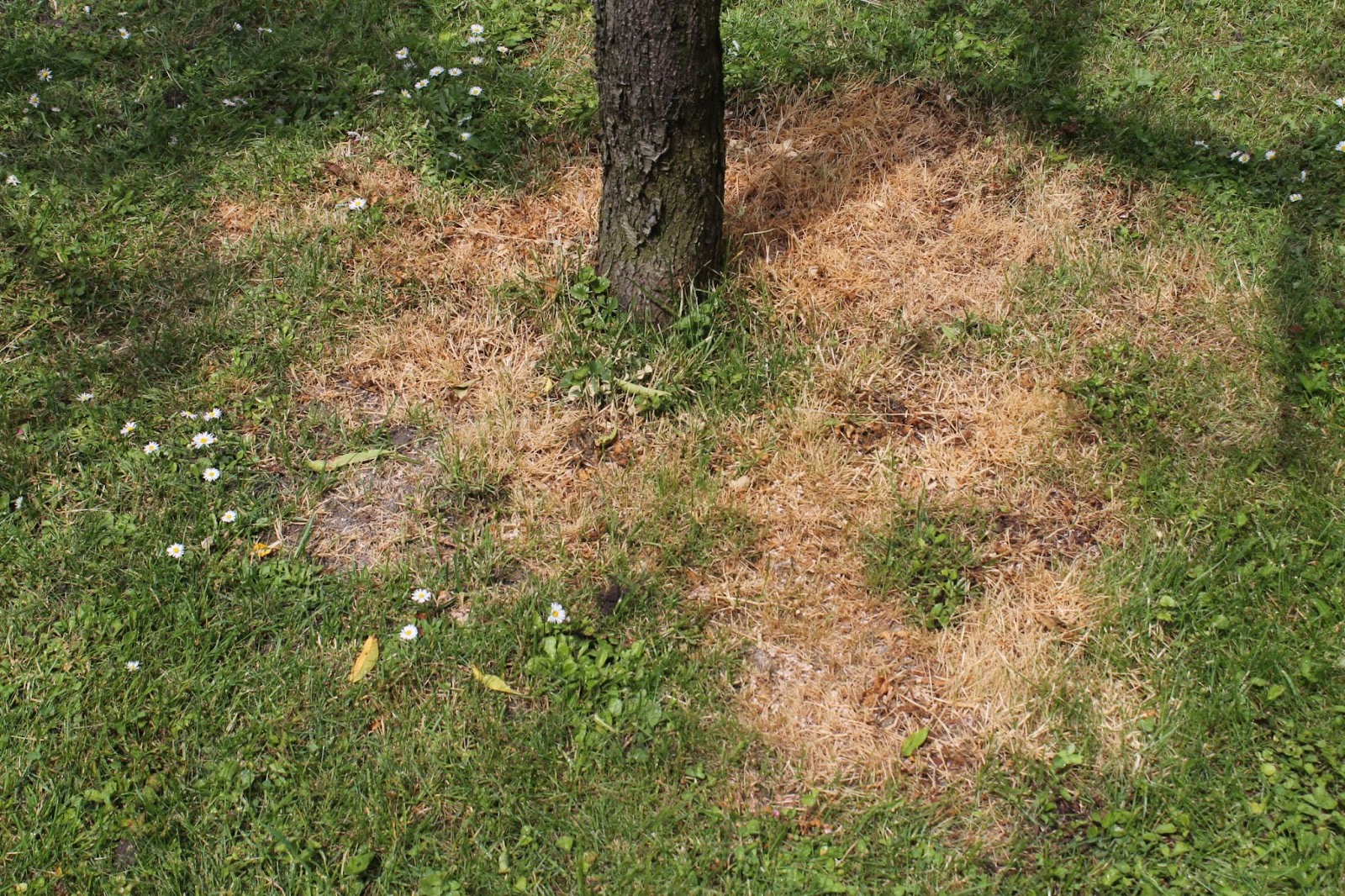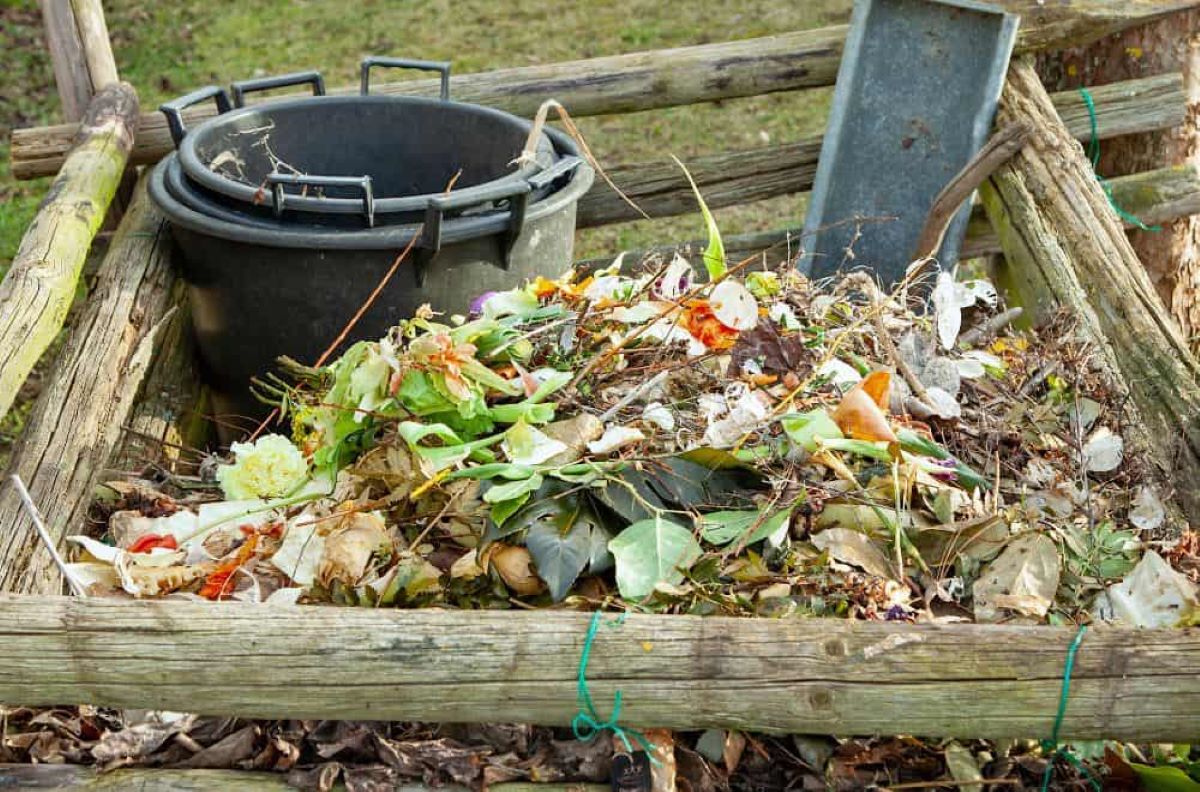Home>Gardening Basics>How Long Does Fertilizer Stay In Soil


Gardening Basics
How Long Does Fertilizer Stay In Soil
Modified: February 5, 2024
Learn about the longevity of fertilizers in soil and discover the factors that affect their staying power. Get started with your fertilizer journey today!
(Many of the links in this article redirect to a specific reviewed product. Your purchase of these products through affiliate links helps to generate commission for Chicagolandgardening.com, at no extra cost. Learn more)
Table of Contents
Introduction
Welcome to the fascinating world of soil fertility and fertilizers! If you’ve ever wondered how long fertilizers stay in soil and the impacts of their persistence, you’re in the right place. Soil fertility plays a crucial role in agricultural productivity, and fertilizers are key components that help replenish essential nutrients for plant growth.
Understanding the persistence of fertilizers in soil is vital for effective fertilizer management and environmental stewardship. It helps determine the optimal timing and frequency of fertilizer applications, preventing overapplication and minimizing nutrient losses.
Fertilizers can have both short-term and long-term effects on soil fertility. Some nutrients are readily available to plants shortly after application, while others take longer to be released. Different factors can influence the persistence of fertilizers in the soil, such as the type of fertilizer, soil characteristics, weather conditions, and agricultural practices.
In this article, we will explore the factors that affect the persistence of fertilizers in soil, the types of fertilizers and their residual effects, the environmental impacts of long-lasting fertilizer residues, and techniques to reduce fertilizer persistence in the soil.
So, let’s dig deeper into the exciting world of fertilizers and soil fertility, and discover how they interact to support sustainable and productive agriculture.
Factors Affecting the Persistence of Fertilizers in Soil
The persistence of fertilizers in soil is influenced by a variety of factors. Understanding these factors is essential for optimizing fertilizer application practices and minimizing potential adverse effects. Here are some of the key factors that affect the persistence of fertilizers in soil:
- Type of Fertilizer: Different types of fertilizers have varying persistence in soil. For example, water-soluble fertilizers, such as urea or ammonium nitrate, are more prone to leaching and can have a relatively short persistence. On the other hand, slow-release fertilizers, like controlled-release fertilizers or organic fertilizers, release nutrients over an extended period, resulting in a longer persistence.
- Soil Characteristics: The physical and chemical properties of the soil play a significant role in determining the persistence of fertilizers. Soils with higher clay content tend to have better nutrient retention capacities, resulting in longer persistence. Additionally, soil pH, organic matter content, and cation exchange capacity can also affect fertilizer persistence. Acidic soils, for example, may increase the leaching loss of some nutrients.
- Weather Conditions: Environmental factors, such as temperature, rainfall, and humidity, can impact the persistence of fertilizers in soil. High temperatures can accelerate the nutrient release from fertilizers, while heavy rainfall or excessive irrigation can leach nutrients deeper into the soil profile. Dry conditions, on the other hand, may slow down nutrient release and prolong the persistence of fertilizers.
- Agricultural Practices: Fertilizer application methods and timing can greatly influence the persistence of fertilizers in soil. Proper nutrient management practices, such as applying the right amount of fertilizer at the appropriate time, can enhance nutrient uptake by plants and minimize nutrient losses. Additionally, incorporating fertilizers into the soil or using precision application techniques can improve fertilizer distribution and utilization, reducing potential persistence.
It’s important to note that these factors interact with each other in complex ways, and their combined effects determine the overall persistence of fertilizers in soil. Therefore, it’s crucial to consider these factors when developing fertilizer management strategies to ensure optimal nutrient availability for plants while minimizing environmental impacts.
Now that we’ve explored the factors that influence fertilizer persistence in soil, let’s delve into the types of fertilizers and their residual effects to gain a deeper understanding of their long-term impacts.
Types of Fertilizers and Their Residual Effects
There are various types of fertilizers available on the market, each with different nutrient compositions and release characteristics. Understanding the types of fertilizers and their residual effects is essential for making informed choices in fertilizer management. Here are some common types of fertilizers and their key characteristics:
- Water-Soluble Fertilizers: Water-soluble fertilizers, such as ammonium nitrate or urea, dissolve quickly in soil moisture, making nutrients readily available to plants. These fertilizers have a relatively fast release rate and may require frequent applications to meet plant nutrient requirements. However, their high solubility also makes them more prone to leaching, which can result in nutrient losses and potential environmental impacts.
- Soluble Powders and Granules: These fertilizers contain nutrients in a powdered or granular form that dissolves or breaks down slowly in soil moisture. They release nutrients gradually, providing a sustained supply to plants over time. Soluble powders and granules offer more controlled nutrient release, reducing the risk of leaching and increasing nutrient use efficiency.
- Controlled-Release Fertilizers: Controlled-release fertilizers (CRF) are designed to release nutrients gradually over an extended period. They are typically coated or encapsulated to control the rate of nutrient release. CRFs offer several benefits, including reduced nutrient leaching, minimized fertilizer application frequency, and improved nutrient uptake by plants. However, it’s important to follow manufacturer instructions to ensure proper application and maximize CRF efficacy.
- Organic Fertilizers: Organic fertilizers, derived from natural sources such as animal manure, compost, or plant residues, provide nutrients in a slow-release form. These fertilizers release nutrients gradually as they break down, enriching the soil with organic matter and improving soil health. Organic fertilizers contribute to long-term nutrient availability, enhance soil structure, and promote beneficial microbial activity. However, their nutrient content may vary, and they require proper decomposition to release nutrients effectively.
The residual effects of fertilizers refer to how long the applied nutrients remain available in the soil for plant uptake. Water-soluble fertilizers typically have a shorter residual effect as nutrients can be quickly depleted or lost through leaching and runoff. In contrast, controlled-release fertilizers and organic fertilizers can provide nutrients over an extended period, resulting in longer residual effects.
It’s important to take into account the residual effects of fertilizers when planning fertilization programs. Considering factors like crop nutrient requirements, soil nutrient levels, and the longevity of the chosen fertilizer type can help optimize nutrient availability and minimize the risk of nutrient imbalances or environmental impacts.
Now that we have explored the types of fertilizers and their residual effects, let’s examine the potential environmental impacts of long-lasting fertilizer residues.
Environmental Impacts of Long-lasting Fertilizer Residues
The persistence of fertilizers in the soil can have significant environmental implications. While fertilizers are essential for promoting plant growth and increasing agricultural productivity, their excessive use or improper management can lead to negative impacts on the environment. Let’s explore some of the environmental implications of long-lasting fertilizer residues:
- Nutrient Pollution: When fertilizers persist in the soil for an extended period, there is a higher risk of nutrient accumulation in the soil. Excess nutrients, such as nitrogen and phosphorus, can leach into groundwater or be carried by runoff into rivers, lakes, and streams. This can cause eutrophication, an excessive growth of algae and aquatic plants, which depletes oxygen levels and harms aquatic ecosystems.
- Water Contamination: Long-lasting fertilizer residues can contribute to water pollution. Nitrate, a common form of nitrogen in fertilizers, is highly soluble in water and can easily leach into groundwater. Elevated nitrate levels in drinking water can be harmful to human health, particularly for infants and pregnant women. High nitrate concentrations in surface water bodies can also have detrimental effects on aquatic life.
- Greenhouse Gas Emissions: Some fertilizers, particularly nitrogen-based ones, can contribute to greenhouse gas emissions. When nitrogen-based fertilizers are applied to the soil, they can undergo chemical reactions that release nitrous oxide (N2O), a potent greenhouse gas. Nitrous oxide contributes to global warming and can also deplete the ozone layer.
- Biodiversity Loss: Excessive fertilizer use, especially of long-lasting fertilizers, can disrupt natural ecosystems and lead to biodiversity loss. High nutrient levels can favor the growth of aggressive and invasive plant species, outcompeting native plants and reducing biodiversity. Additionally, nutrient runoff from agricultural fields can impact neighboring ecosystems, affecting the diversity of plants, animals, and microorganisms.
It is crucial to adopt sustainable and responsible fertilizer management practices to mitigate these environmental impacts. Implementing practices such as precision agriculture techniques, soil testing to determine nutrient requirements, and proper timing and application of fertilizers can help minimize nutrient losses and reduce the persistence of fertilizers in the soil. Additionally, incorporating organic matter, cover cropping, and conservation practices can improve soil health and nutrient retention, further reducing potential environmental harms.
By understanding the environmental impacts of long-lasting fertilizer residues, we can make informed decisions and take proactive measures to protect our environment, safeguard water resources, and promote sustainable agricultural practices.
Next, let’s examine some techniques that can help reduce fertilizer persistence in the soil.
Techniques to Reduce Fertilizer Persistence in Soil
To minimize the persistence of fertilizers in soil and promote sustainable agriculture, there are several techniques and best practices that can be implemented. These approaches focus on optimizing nutrient use efficiency, reducing nutrient losses, and improving soil health. Let’s explore some of the techniques to reduce fertilizer persistence in soil:
- Soil Testing and Nutrient Management: Conducting regular soil testing helps determine the nutrient status of the soil and guides fertilizer application rates and timings. By applying fertilizers based on the specific nutrient requirements of the crop, excess fertilizer application can be avoided, reducing the potential for residual effects.
- Precision Agriculture: Utilizing precision agriculture technologies, such as remote sensing and GPS mapping, allows for more targeted and site-specific fertilizer application. These techniques enable farmers to apply fertilizers only where and when they are needed, minimizing wastage and increasing nutrient use efficiency.
- Split Application of Fertilizer: Splitting fertilizer applications into multiple doses throughout the growing season helps to match nutrient availability with the crop’s needs. This approach reduces the likelihood of excess nutrients persisting in the soil and minimizes leaching or runoff losses.
- Cover Crops and Crop Rotation: Planting cover crops or practicing crop rotation can help improve nutrient cycling and reduce reliance on synthetic fertilizers. Cover crops trap and utilize excess nutrients, preventing them from leaching into the soil. Crop rotation breaks pest and disease cycles, reducing the need for high fertilizer inputs and lowering the risk of residual effects.
- Use of Slow-Release Fertilizers: Choosing slow-release or controlled-release fertilizers can provide a sustained and steady supply of nutrients to crops. These fertilizers release nutrients gradually, reducing the risk of nutrient loss and prolonging their effectiveness in the soil.
- Integrated Nutrient Management: Integrating various nutrient sources, such as organic fertilizers, biofertilizers, and mineral fertilizers, can help balance nutrient availability and minimize the persistence of any single fertilizer type. This approach promotes a diverse and sustainable nutrient management strategy.
- Improving Soil Organic Matter: Increasing soil organic matter levels through practices like incorporating organic amendments, cover cropping, and conservation tillage can enhance nutrient cycling, improve soil structure, and increase water holding capacity. This can lead to better nutrient utilization by plants and reduce the persistence of fertilizers.
By employing these techniques, farmers and land managers can not only reduce the persistence of fertilizers in soil but also promote efficient nutrient use, protect water quality, and enhance overall soil health. It is crucial to adapt and implement these practices in a manner that suits the specific crop, soil type, and environmental conditions of each agricultural system.
Now that we have explored various techniques to reduce fertilizer persistence in soil, let’s summarize our findings and conclude this article.
Conclusion
Understanding the persistence of fertilizers in soil is crucial for sustainable agriculture and environmental stewardship. Factors such as fertilizer type, soil characteristics, weather conditions, and agricultural practices influence the persistence of fertilizers. Water-soluble fertilizers have a shorter persistence, while slow-release fertilizers and organic fertilizers can provide nutrients over an extended period.
The persistence of fertilizers can have significant environmental impacts, including nutrient pollution, water contamination, greenhouse gas emissions, and biodiversity loss. To mitigate these effects, it is important to adopt responsible fertilizer management practices. This includes soil testing, precision agriculture techniques, split application of fertilizers, cover cropping, and integrating nutrient sources. These practices help optimize nutrient use efficiency, reduce nutrient losses, and improve soil health.
By implementing these techniques, farmers and land managers can minimize the potential negative impacts of long-lasting fertilizer residues. This promotes sustainable agriculture, protects water resources, reduces greenhouse gas emissions, and preserves biodiversity.
It is important to note that fertilizer persistence is influenced by various factors, and there is no one-size-fits-all approach. Thus, it is crucial to consider local soil conditions, crop requirements, and environmental considerations when choosing and managing fertilizers.
In conclusion, managing fertilizer persistence in soil is an ongoing process that requires careful consideration of nutrient needs, proper application techniques, and environmental impacts. By adopting sustainable and responsible fertilizer management practices, we can ensure productive and environmentally friendly agriculture for future generations.







